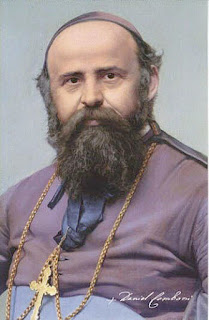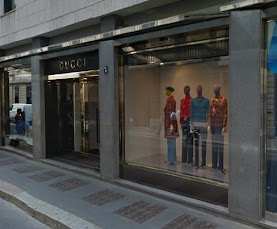Missionary who worked miracles after his death
 |
| Daniele Comboni |
Saint Daniel, who was a Roman Catholic missionary to Africa, died on this day at the age of 50 in 1881 in Khartoum in the Sudan. He was canonised in 2003 by Pope John Paul II in recognition of two miracle cures claimed to have been brought about by his intercession.
Comboni was born in 1831 at Limone sul Garda in the province of Brescia in Lombardy in northern Italy.
His parents were poor and he was the only one of their eight children to live to become an adult.
Comboni was sent away to school in Verona and after completing his studies prepared to become a priest.
He met and was profoundly influenced by missionaries who had come back from Central Africa and three years after his ordination set off with five other priests to continue their work.
After they reached Khartoum some of his fellow missionaries became ill and died because of the climate, sickness and poverty they encountered, but Comboni remained determined to continue with his mission.
On his return to Italy, while praying for guidance at the tomb of Saint Peter in Rome, Comboni came up with the idea of a missionary project to save Africa.
 |
| A statue of Daniele Comboni in Verona, where he was educated before training to be a priest |
He established missionary institutes for men and for women, becoming the first person to bring women into missionary work in central Africa.
In 1877 he was named Vicar Apostolic of Central Africa and ordained a bishop. In 1880 he travelled to Africa again to speak out against the slave trade, but the following year, after falling ill with disease, he died. His last words were believed to have been: ‘I am dying, but my work will not die.’
His work was continued by the Comboni missionaries, whose numbers grew to nearly 2000 members spread all over the world.
More than 100 years later it was believed that an Afro-Brazilian girl and a Muslim mother from the Sudan were both cured of illness by a miracle worked through Comboni’s intercession.
This led to Comboni being canonised by Pope John Paul II in St Peter’s in Rome in 2003.
 |
| The stairway to the church of San Rocco in Limone sul Garda |
Limone sul Garda where Comboni was born is one of the most popular resorts on Lake Garda and the only tourist attraction on the north west side of the lake. It can be reached from Riva del Garda along a narrow road that travels through tunnels inside the cliffs. In the centre of the town is the 15th century church of San Rocco, built by residents of Limone who had survived the plague. It is accessed by a picturesque stairway decorated with flowers and plants and is one of the most photographed sights in Limone.
Travel tip:
Lake Garda is Italy’s largest lake, with soft hills at the southern end and steep rugged cliffs at the northern end where Limone is situated. The beauty of Lake Garda has been praised by Catullus, Dante and Goethe over the centuries and nowadays it is a popular holiday destination in Italy visited by tourists from all over the world.
(Photo of Comboni statue by Giacomo Augusto 2 CC BY-SA 3.0)
(Photo of San Rocco stairway from visitlimonesulgarda.com)
More reading:
Pope John Paul II forgives the man who tried to assassinate him
Celebrating the Feast of Saint Francis of Assisi
From Naples to New York, Italians celebrate the Festival of San Gennaro
Home






